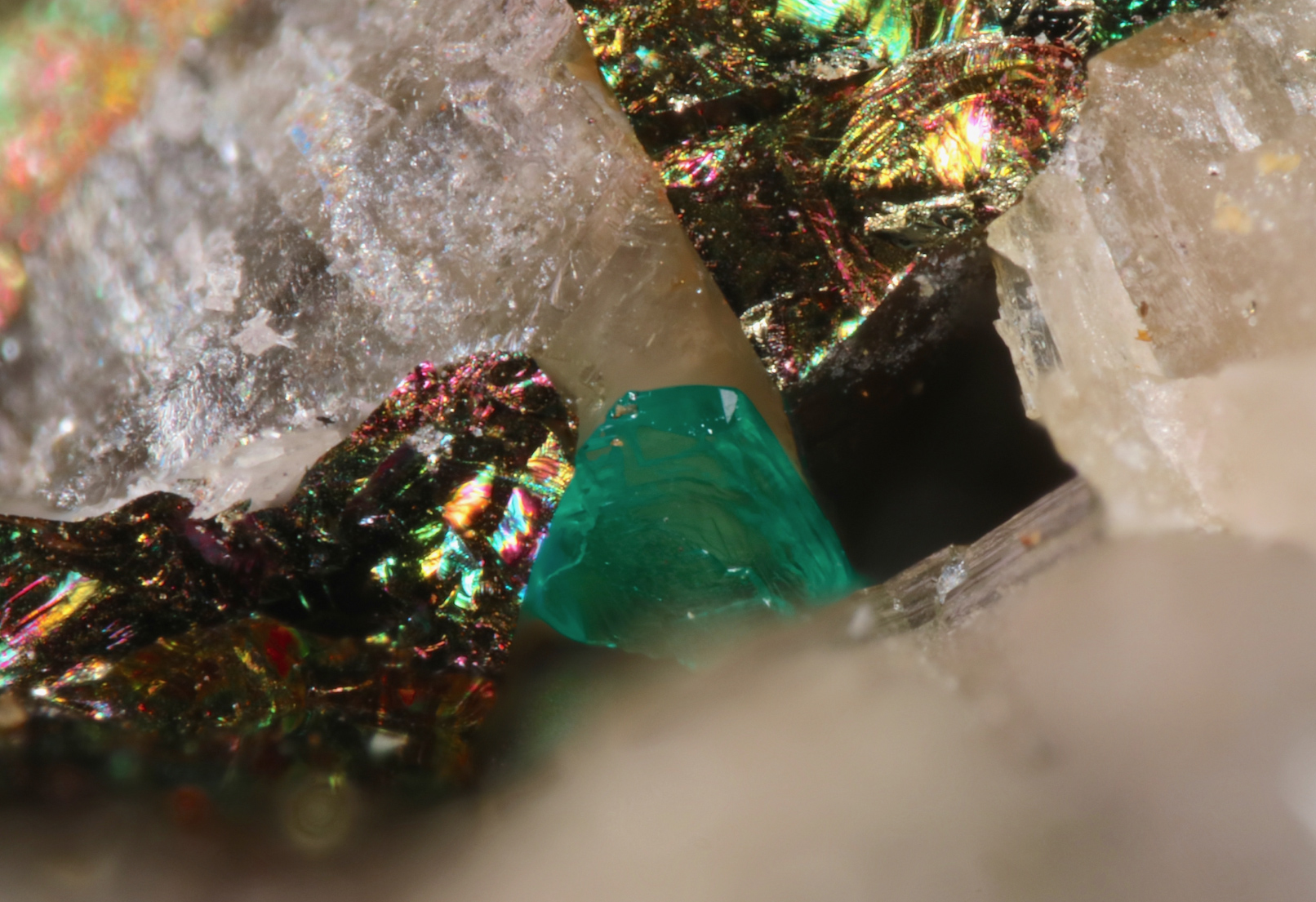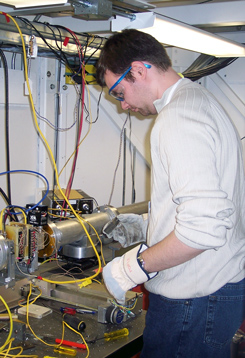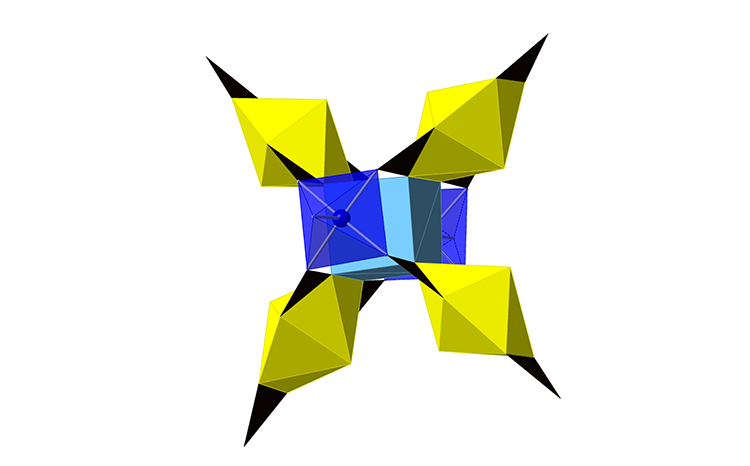One of Two New Carbon Minerals is First of Its Kind
25 May 2018
Paddlewheelite photo by Travis Olds.
Three years and 15 new minerals later, the Carbon Mineral Challenge continues to produce surprises. Launched in 2015, the Carbon Mineral Challenge is a quest to find 145 carbon minerals predicted to exist but yet to be discovered.
The latest entries are new carbon minerals ramazzoite and paddlewheelite. Both share copper origins, and both are wrapped in intrigue.
For starters, ramazzoite is the first polyoxometallate mineral. A polyoxometallate contains a cluster of metal atoms bound together by oxygen.
“The really unusual thing is that we know of polyoxometallates because we can produce them in the lab, but they have never been found in nature before,” noted Carbon Mineral Challenge lead Dan Hummer. Polyoxometallates have been produced synthetically since they were first discovered in 1826.

Daniel Hummer (Southern Illinois University) preparing equipment at Stanford Synchrotron Radiation Lightsource, SSRL (in Menlo Park, California, USA).
“When chemists make a polyoxometallate, they’re using a very specific cookbook,” added Hummer.“They’re putting together exactly the right chemical ingredients into a solution at exactly the right temperature for exactly the right amount of time. This discovery of ramazzoite is one that conforms to the large number of rare events model that we invoke in our paper – that minerals are a result of a large number of these very unusual events where specific circumstances happen to come together in a particular place at a particular time.”
The second surprising thing about ramazzoite is that it has a large variety of anions, or negatively charged groups of atoms.
“Normally a mineral has just a single anion and then maybe can have a variety of different metal atoms. But in this one we have many different anions. It’s not just a carbonate mineral, it’s not just a sulfate mineral,” continued Hummer. “It has phosphate, carbonate, hydroxide, and sulfate. It has all of the above. And that’s really unusual.”
“Out of all the minerals we’ve seen in the Carbon Mineral Challenge, ramazzoite is definitely the most out of left field. It’s a double whammy, with two characteristics that are really unusual.”
Anthony Kampf of the Los Angeles County Natural History Museum, USA led the ramazzoite research discovery team, which included George R. Rossman, Chi Ma, Donato Belmonte, Cristian Biagioni, Fabrizio Castellaro, and Luigi Chiappino. The original specimen was found in and named after Monte Ramazzo mine in Liguria, Italy.
The other recently discovered carbon mineral, paddlewheelelite is unique because of its structure.
While most minerals are named after people or locations, paddlewheelite was named for its unusual construction. Atomically, it is comprised of four “paddlewheels” made of three radioactive uranyl clusters, held together by copper axles, much like the paddle of an old-fashioned steamboat.

Image depicting paddlewheelite’s distinctive cage structure. Courtesy of Travis Olds.
“Paddlewheelite’s chemistry is interesting, but actually not that unusual. It’s a uranyl carbonate mineral, and there are a few dozen other known uranyl carbonate minerals,” explained Hummer. “This is one that maybe was not exactly predicted, but we would anticipate something like it, whereas ramazzoite – we did not anticipate anything like it.”
Travis Olds, Washington State University, USA led the paddlewheelite reseach, joined by Jakub Plásil, Anthony R. Kampf, Fabrice Dal Bo, and Peter C. Burns.
The additions of ramazzoite and paddlewheelite to the Carbon Mineral Challenge brings the total number of new copper minerals to five.

